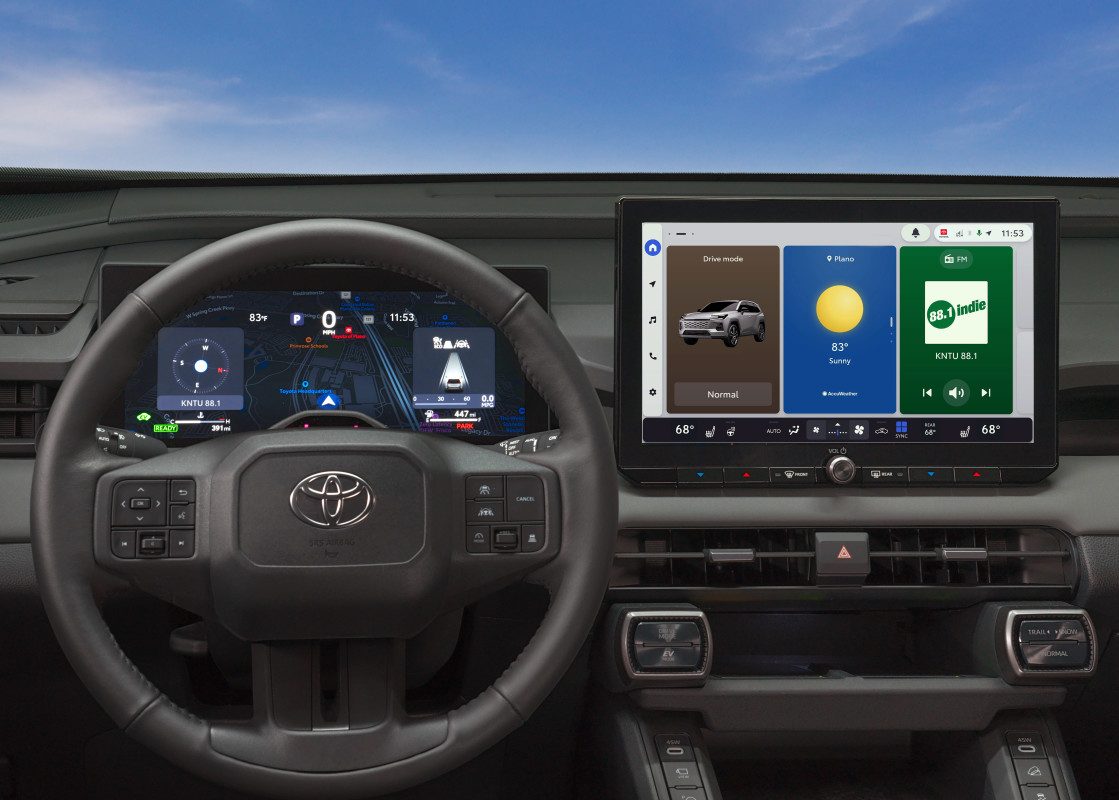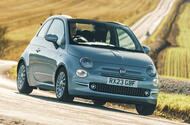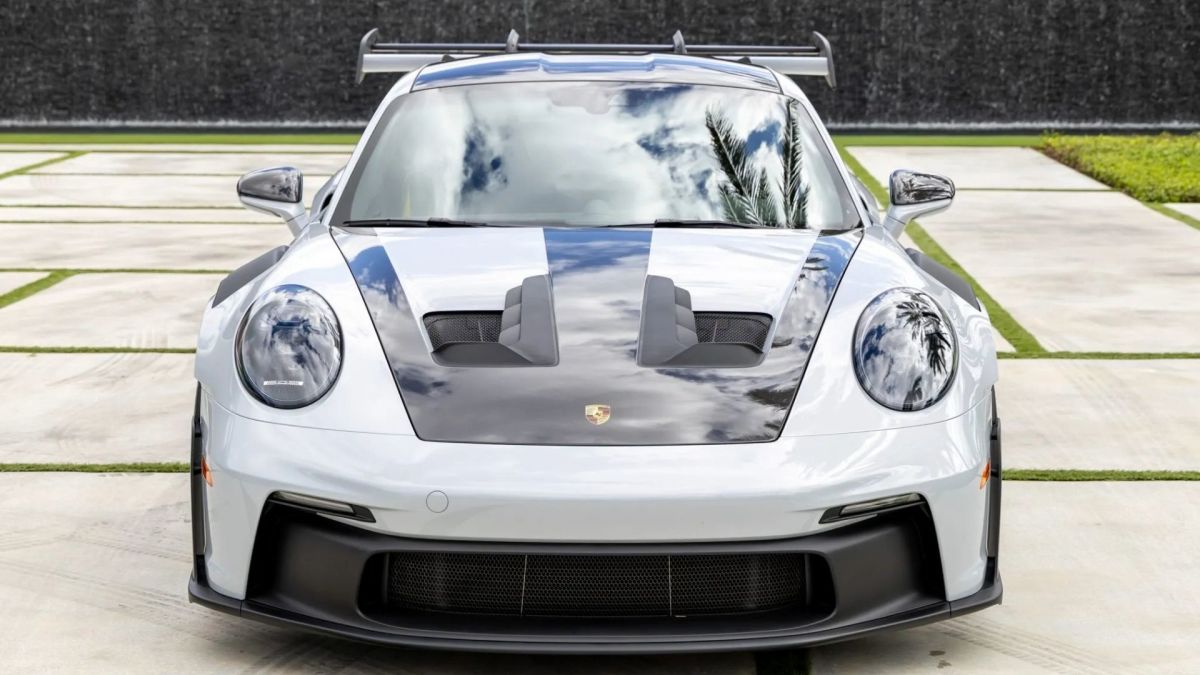The company car era was a gilded age of status and aspiration, where the difference between L and GL could ignite class warfare on the roads.
The company car has long been a symbol of status, prestige, and ambition. In the workplace, the right set of wheels represented not just a mode of transport, but a declaration of success. During the transformative decades of the 70s, 80s, and 90s, these vehicles, affectionately dubbed ‘repmobiles’ in the UK, became essential to office life. For many employees, the allure of a new car was a significant motivator to switch jobs, while those who remained with their employers often did so in anticipation of a promotion that would warrant a new set of keys—perhaps an upgrade from a base model to a more luxurious trim level.
This era was marked by a fierce competition among employees, each vying to showcase their achievements through the vehicle they drove. The company car became a badge of honor, often leading to a hierarchy that was all too apparent on the roads. The distinctions between trim levels—such as the difference between the L and GL—were not merely superficial; they represented a clearer pecking order within the corporate environment.
Many of us can recall the thrill of watching a parent return home with a brand-new car, its fresh registration plate signaling success. These vehicles, predominantly from the D-segment saloon and hatchback sector, were more than just cars; they were a reflection of one’s professional standing. The excitement around these repmobiles was palpable, as they embodied dreams of upward mobility and financial security.
In recent years, the company car landscape has shifted dramatically. The trend has moved towards monthly car allowances, giving employees the flexibility to choose from a broader range of vehicles, including secondhand options. For those who opt to remain within traditional company car schemes, electric vehicles have emerged as a popular choice, thanks to their favorable Benefit-in-Kind taxation rates. However, the nostalgia for the classic company cars of yesteryears remains strong, as they represented a unique blend of aspiration and practicality.
Among the standout models from this golden age was the Ford Cortina MK3, a car that played a pivotal role in kick-starting the company car revolution in the UK. Launched in 1970, the Cortina’s distinctive design and range of engine options appealed to a wide audience. Ford’s strategic expansion of trim levels allowed employees to communicate their status through their choice of vehicle. The GXL version, for instance, with its vinyl roof and extra dials, signified a serious player in the corporate world. The Cortina continued to dominate the market until its retirement in 1982, still holding the title of the UK’s best-selling car at that time.
The rivalry between Ford and Vauxhall during this period was fierce, with the Vauxhall Cavalier MK2 making its debut in 1981. This model introduced front-wheel drive and a range of efficient engines, quickly gaining traction among company car users. The Cavalier’s versatility, available in various body styles from saloon to estate, made it a popular choice for fleet managers. Despite its initial success, the Cavalier struggled to maintain its lead as the Ford Sierra, launched in 1982, began to capture the market’s attention with its bold design and improved driving dynamics.
The BMW 3 Series E46, introduced in 1997, marked a significant turning point in the company car market. Its combination of luxury, performance, and aesthetic appeal made it the car to have on one’s driveway. As the 3 Series gained popularity, traditional company cars like the Ford Mondeo and Vauxhall Vectra began to see a decline in sales. The 3 Series represented a shift towards a more premium image in the corporate car park, effectively signaling the end of an era for mainstream D-segment vehicles.
The Nissan Primera MK1 was another notable entry during this time, designed specifically for the European market. The Primera combined reliability with a dynamic driving experience, making it a strong contender against its rivals. However, it ultimately faded from prominence, much like the Ford Mondeo MK1, which was launched with great fanfare in the 90s but struggled to keep up with the rising tide of premium competitors.
Peugeot’s 406, launched in 1995, aimed to blend design and performance, but faced challenges in establishing itself as a premium option. While it received praise for its handling and ride quality, the Peugeot badge struggled to convey the same level of prestige that brands like BMW and Audi achieved. The Citroen BX also made its mark in the company car space, offering a unique design and innovative features, but its appeal was limited by the brand’s reputation for quirkiness.
The Austin Montego was a car that represented the 80s company car culture, yet it has largely been forgotten in contemporary discussions about British motoring history. Initially, it faced criticism for build quality and reliability but eventually gained traction among fleet managers as its production improved. The Vauxhall Vectra MK1, despite Jeremy Clarkson’s infamous critique, was a spacious and comfortable option, albeit overshadowed by the more dynamic Ford offerings.
The Toyota Carina E was another vehicle that sought to penetrate the lucrative fleet market in the early 90s. While it offered reliability and a range of body styles, it lacked the engaging driving experience that many users sought. Despite its shortcomings, the Carina E laid the groundwork for Toyota’s subsequent success in the fleet sector.
The Ford Sierra, with its radical design and rear-wheel drive layout, caused a stir upon its release in 1982. Initially met with skepticism, it eventually found favor among company car drivers, thanks to its spacious interior and improved driving dynamics. The Sierra’s legacy continued until its retirement in 1993, just as the company car landscape began shifting toward more premium models.
These vehicles defined an era where the company car was not just a means of transportation, but a reflection of one’s professional success. As we look back on this period, it becomes clear that the repmobile was a vital part of the corporate landscape, influencing the way employees perceived themselves and were perceived by others. The allure of the company car may have diminished in recent years, but its impact on office culture and personal identity remains a significant chapter in automotive history.
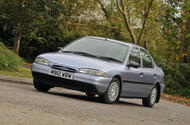
Join us as we celebrate the special era of repdom – when the difference between L and GL was critical
The company car was once a huge status symbol, with ambitious employees jostling for the best set of wheels.
Getting the keys to the right motor was crucial for many, as it let colleagues, neighbours and other road users know just how successful you were at work. Known affectionately as ‘repmobiles’ in deference to the sales reps that used them to ply the UKs roads, these cars were staple of everyday working life.
For many of us, the peak of the company car era was the three decades that covered the 70s, 80s and 90s. During this time, the lure of a new car was a big incentive for many to change jobs, while those that stayed with their employer often did so because promotion meant the possibility of a four-wheeled upgrade. You might not get the pay rise you were after, but if your fleet manager bumped you up a trim level, from an L to GL, then that would help take the edge of.
As car fans we can probably remember the thrill of our parents returning home from work with their new car. Usually featuring the latest registration plate to show just how showroom-fresh the newcomer was, it was a powerful indicator of just how well your mum or dad were doing in the office. And while company cars came in all shapes and sizes, the lion’s share of fleet machines came from the D-segment saloon and hatchback sector.
In recent years, the trend has been for employees to opt for a monthly car allowance, giving them the freedom to choose from a wider pool of cars, including secondhand. Those that do decide to stick to the company car scheme are more likely to be tempted by an electric company car, their rock bottom Benefit-in-Kind taxation rates making them an extremely attractive choice.
But will we look back on these machines with the fondness of the company cars that once ruled the outside lane of the motorway? Maybe not so much. So let’s celebrate that special era by taking a look at those models that our mums and dads used to drive during the golden age of the company car.
Ford Cortina MK3
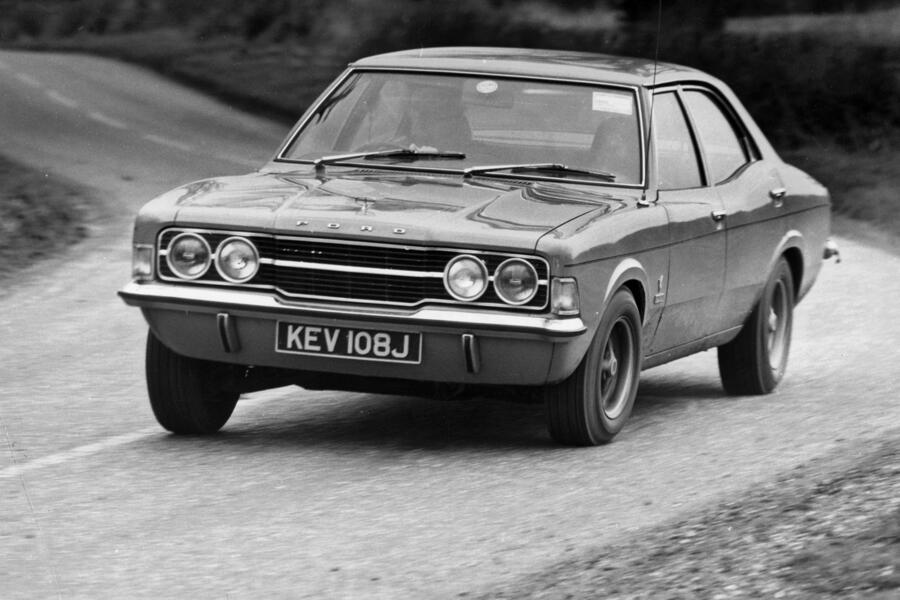
This was the car that arguably kick-started the company car revolution in the UK. The original Cortina debuted in 1962, and its crisp styling, low running costs and fancy ‘Aeroflow’ interior ventilation (yes, really) made it one of the first success stories of fleet car schemes.
However, it wasn’t until the MK3 appeared in 1970 that Ford really tapped into the burgeoning market for company wheels. The Cortina’s distinctive ‘Coke bottle’ design and range of 1.3, 1.6 and 2.0-litre four-cylinder engines gave it broad appeal, but it was the blue oval’s inspired expansion of trim levels that truly cemented the saloon’s status as repmobile royalty.
With the option of base, L, XL, GT and, finally, GXL versions, Ford created a hierarchy that allowed users and onlookers to know exactly where they stood in the company pecking order – with its vinyl roof, body rubbing strips and dashboard crammed with extra dials, the GXL immediately let others know that you were someone to be taken seriously in the office..
The Cortina soldiered in for two further generations and, despite its increasingly outdated rear-drive platform and asthmatic engines, its huge popularity with fleets meant that by the time it was officially retired in 1982 it was still the UK’s best-selling car.
Vauxhall Cavalier MK2
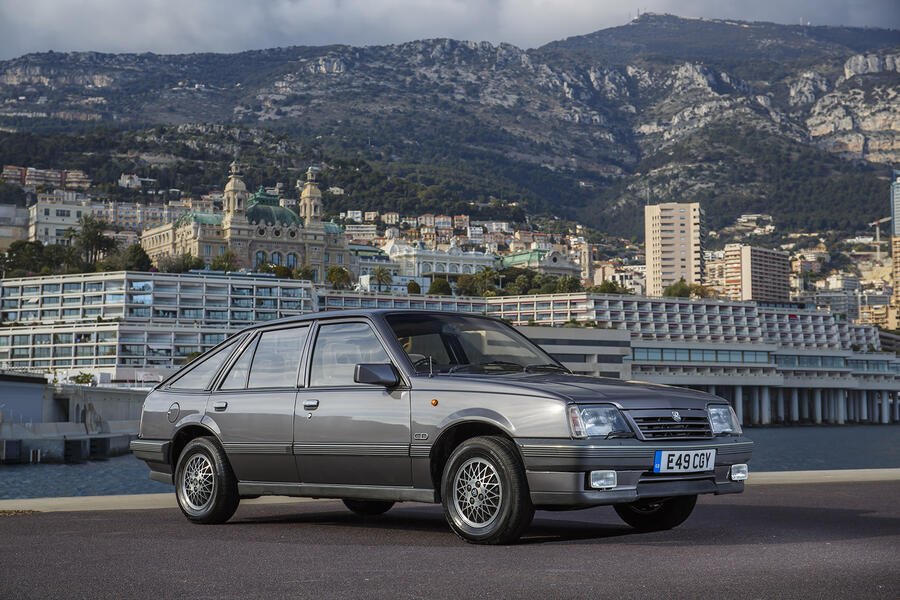
Ford versus Vauxhall – it was the deadly rivalry that defined the golden age of the company car in Britain. In terms of sales volume the Blue Oval usually had the upperhand, but that changed with the arrival of the second generation Cavalier. Launched in 1981 and based on General Motor’s J-car platform, the family-friendly Vauxhall packed front-wheel drive for the first time and a range of advanced ‘Family II’ overhead cam engines.
Compared to its nemesis, the now elderly Cortina, the Cavalier was faster and more agile, plus it offered greater efficiency. Ford countered with the Sierra (more on that later) in 1982, but its Cortina replacement looked so outlandish that many reps opted instead for the more conservatively styled Vauxhall. It also helped that the Vauxhall was available in a wide range of bodystyles, including four-door saloon, five-door hatch and roomy estate (built in Australia, don’t you know). There was even a convertible.
Of course, Luton had learned a few tricks from Ford, so the Cavalier also boasted a wide range of trim and engine options, including a racy SRi that packed a fuel-injected 115bhp 1.8-litre petrol and figure-hugging Recaro seats. However, by 1988 Ford had reasserted its grip on user choosers, the now refreshed Sierra making the Vauxhall look a little old hat – and demoting it back to the runners-up spot in the sales rankings.
An all-new, slick-looking replacement helped recover some of the lost ground, but it wasn’t enough and by 1995 the Cavalier name was consigned to the automotive history books.
BMW 3 Series E46
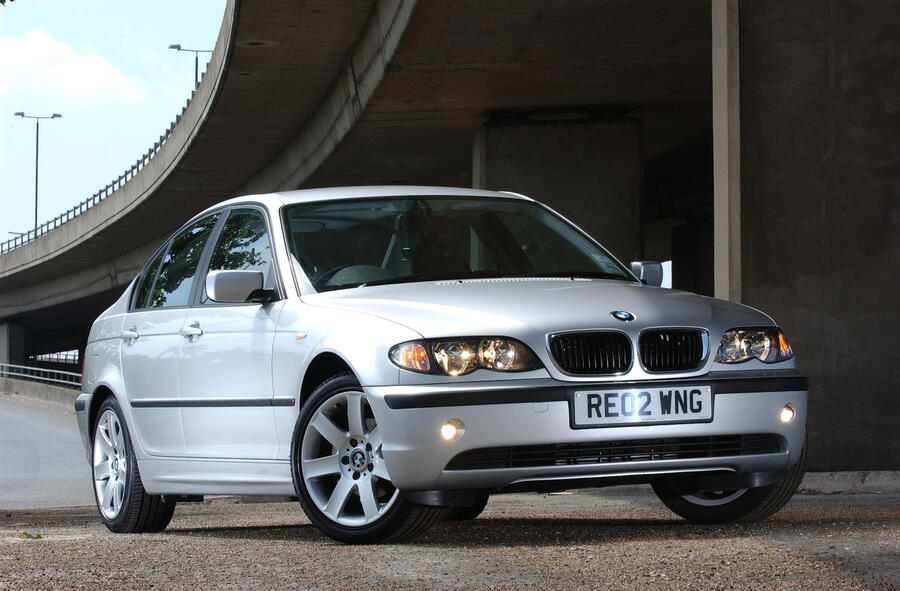
If there’s one car that could be singled-out for having killed off the traditional company car, then it’s the BMW 3 Series. The Bavarian firm’s smallest saloon has been around since the 70s, but it wasn’t until the E30 version that debuted in 1982 that it began its inexorable rise to the top. It was around the same time that fleet managers were less inclined to follow the old ‘buy British’ edict and, as a result, a few lucky reps were allowed to order a stripped-out, entry-level 316 rather than a glitzy Ford Sierra Ghia.
Yet it was the 1997 E46 that really put the 3 Series on the company car map. Not only was it brilliant to drive, beautifully finished and boasted the option of BMW’s sonorous straight-six motors, it now matched mainstream rivals for kit. Sure it wasn’t quite as spacious as its slightly larger and less expensive rivals, but the car’s premium image more than made up for it. Quite simply, if you had a BMW on your drive, then you’d ‘made it’.
The 90s were all about swagger and style, which traditional company car fodder simply couldn’t deliver. So, as the sales of the 3 Series soared, those of the Ford Mondeo, Vauxhall Vectra, Renault Laguna and so on, began to enter terminal decline. With a little help from the Audi A4 and Mercedes C-Class, the BMW essentially hammered the last few nails into the coffin of the mainstream D-segment saloon and hatch.
Nissan Primera MK1
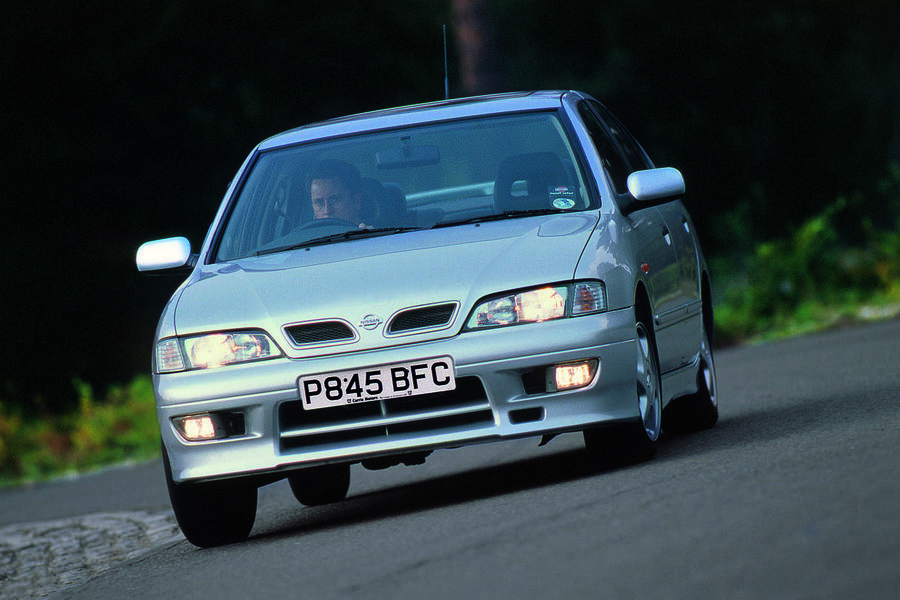
The recent influx of Chinese car brands has left the European car industry very much in existential crisis mode. Rewind 40-odd years and it was the Japanese companies that the region feared, with the result that in the late 70s the UK Government slapped numerous quotas and tariffs on vehicles arriving from the Land of the Rising Sun.
As a result, Japanese firms struggled to get a toehold in Britain, both in terms of retail and fleet sales. So, as a workaround of the rules Nissan opened a factory in the UK (followed soon by Toyota and Honda). On paper that was great news, but unfortunately the car it chose to build there was the Bluebird, a sensible saloon high on reliability and kit, but low charisma.
Undeterred, Nissan launched the Primera. Designed and engineered for Europe it combined the firm’s trademark quality with real dynamic sparkle. It looked a bit anodyne, but thanks to its sophisticated mult-link suspension it rode and handled with the elan of a Peugeot 405, while its range of twin-cam 16-valve motors had rivals beaten for verve and efficiency. There was also the flagship 150bhp 2.0e GT, which had the chops to beat most of its sports saloon contemporaries.
The Primera eventually died in 2008, the gawky third generation model proving a very poor relation to the agile and engaging original.
Ford Mondeo MK1
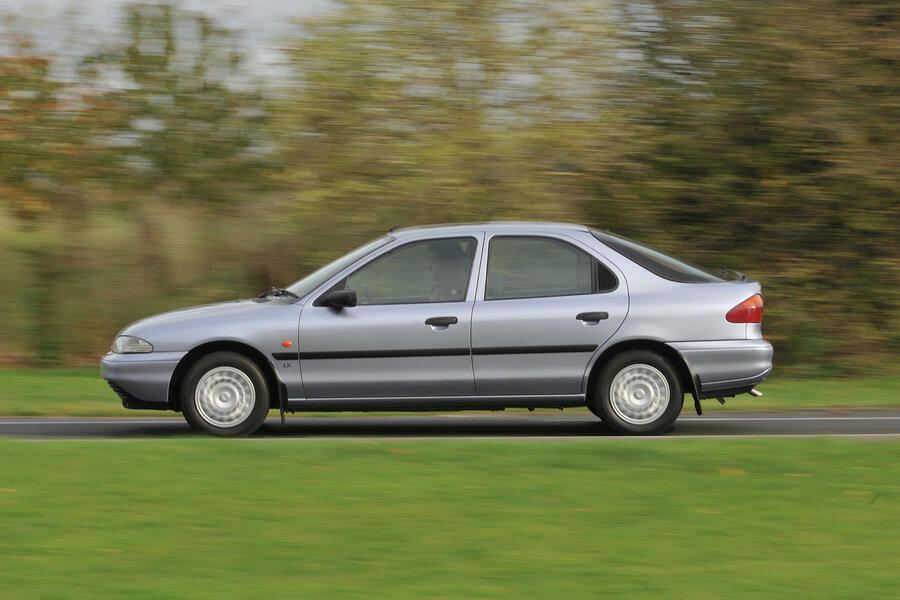
Few cars of the 90s arrived with as much fanfare as the Ford Mondeo. Backed by a £1 billion development budget, the newcomer was tasked with both filling the sizable wheel tracks of the Sierra and revitalising the blue oval’s dowdy image. Billed as a ‘world car’ it would also be sold in markets across the globe, albeit in re-badged and heavily modified form.
Codenamed CDW27, it proved a winner with reps from the outset. Its all-new 16-valve twin-cam engines banished memories of the firm’s plodding Pinto and coarse CVH units, while there was even a smooth and lusty V6 to counter the rising threat from premium rivals. More importantly, it was the first Ford in a long time that was actually good to drive, with deft handling and smooth ride.
It ticked a lot of repmobile boxes too, with a comprehensive trim line-up (Base, LX, GLX, Ghia and Si, should you ask) and a choice of saloon, hatch and estate bodystyles. It was also a relaxed and refined long distance express, as Autocar proved when it racked up an incredible 12,000 miles in a punishing week behind the wheel of a humble 1.6 LX.
The Mondeo survived for four generations in the UK, before the rising tide of premium rivals and SUV alternatives killed it off in 2022. Yet this takes nothing away from the original’s success, which entertained thousands of company car drivers and launched Ford’s 90s renaissance as a brand enthusiasts took seriously.
Peugeot 406
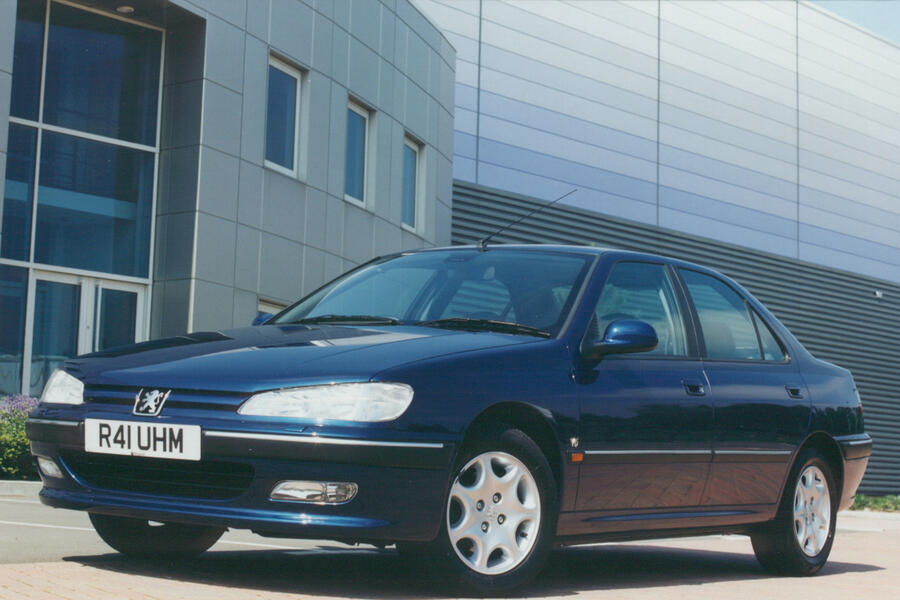
By the time the pretty 406 was launched in 1995, the company car scene was already undergoing permanent change, as perennial fleet favourites succumbed to premium rivals. Peugeot’s answer to this upheaval was a car that aimed to combine the design flair and dynamic poise of its predecessor, the 405, with a big injection of upmarket appeal.
In many respects this approach was a hit. Not only did the svelte 406 look the part, it possessed the sort of agile handling and plush ride that had long been a Peugeot calling card. It also boasted the sort of taut fit and finish that was a world away from its flaky forebear, while the spacious interior was dripping in soft touch materials and even the odd bit of real(ish) wood. In almost every Autocar group test, including those with some high-end German competition, the 406 emerged wearing the winner’s crown.
As ever, there were plenty of trim levels, including LX and GLX, while the sporty SRi with 2.0-litre four-cylinder was the sales rep’s sweet spot. Like the Mondeo there was also a creamy smooth V6 and a cavernous estate. The 406 was a genuinely great car, yet the tide was already turning, and buyers after premium machines just weren’t convinced the Peugeot badge had the cache to help them stand out in the corporate car park.
Citroen BX
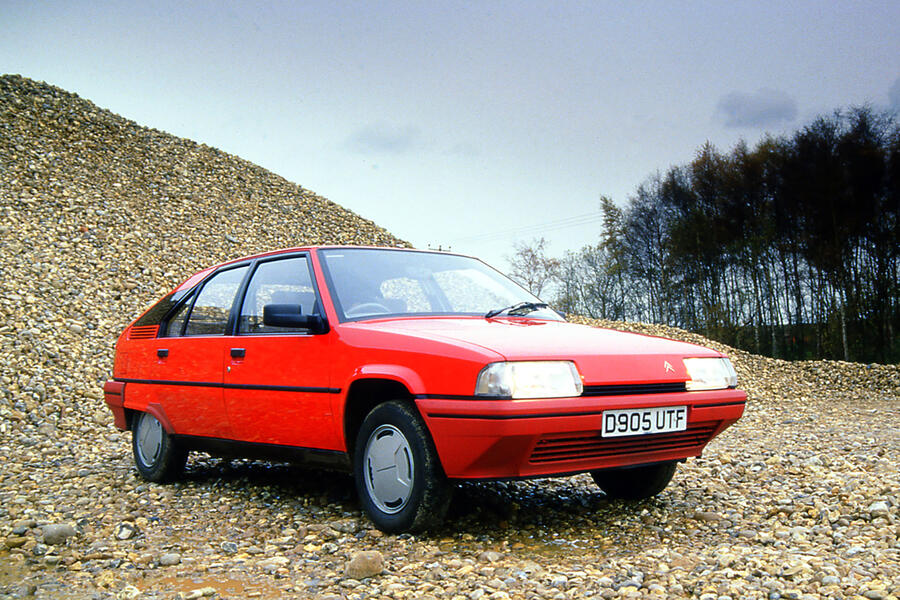
The 70s had been a rough time for Citroen as, deep in the red, it tried to haul itself back to financial health. Spearheading its revival was the BX, which arrived in 1982 and filled a conspicuous family car-sized hole in the firm’s line-up. Designed from the outset to have broad appeal, it deliberately shied away from the company’s previously quirky and idiosyncratic machines.
As a result, it featured crisp lines (it was styled by Marcello Gandini), a roomy interior and range of tried-and-tested engines from parent firm Peugeot. Yet it also used Citroen’s trademark oleo-pneumatic self-levelling suspension and featured lightweight composite body panels. Better still, it went as well as it looked, with crisp handling and a typically unruffled ride. More importantly, it was as reliable as the brand claimed, endearing it to tight-fisted fleet managers.
But perhaps the BX’s greatest contribution to the company car firmament was its range of diesel engines. At a time the average compression ignition engine had more in common with agriculture than A roads, but the Citroen’s smooth, willing (the turbocharged version could leave hot hatches looking a little red–faced) and efficient XUD units paved the way for wide-scale fleet acceptance of the previously pilloried fuel.
Austin Montego
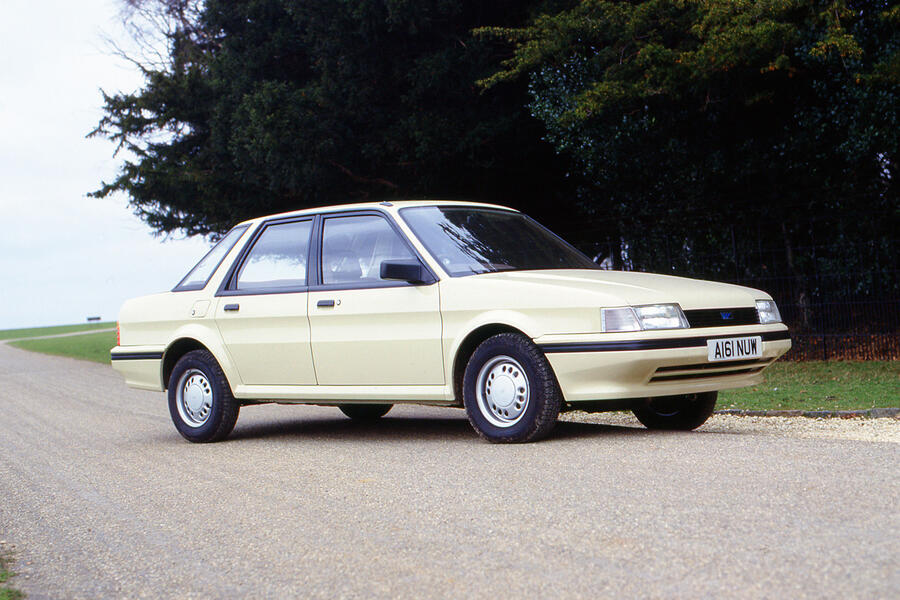
These days the Montego is an almost forgotten footnote of UK motoring history, but back in its 80s heyday it was a company car staple, one of the outside-lane-big-hitters with the Ford Sierra and Vauxhall Cavalier. Based on a stretched version of the Maestro hatchback, the Montego’s scalloped flanks and body coloured bumpers made it stand out in the motorway service carpark, while swanky versions boasted a digital dash and voice synthesized trip computer. It was also good to drive, with a nimble front-drive chassis and its gruff but torquey 1.6 and 2.0-litre petrol engines.
Yet early cars suffered patchy build quality, reliability woes and production delays due to staff strikes, meaning it was often bottom of most user choosers’ wish lists. However, Austin Rover soon learned how to screw it together properly, while the addition of two-tone paint and red stripes for the fleet-baiting L and LX models boosted its appeal with image-conscious reps.
For those higher up the management pecking order there was the torque steer-tastic MG-badged Turbo, or the flagship Vanden Plas, which featured an interior slathered in wood and leather. There was also an estate with a seven-seat option, while the diesel version introduced in 1988 pioneered direct injection technology.
Incredibly, the car soldiered on until 1994, but by then Rover had the Honda Accord-based 600 as its cutting company car weapon and the Montego became the sort of car that was handed to underperforming reps as a very public punishment.
Vauxhall Vectra MK1
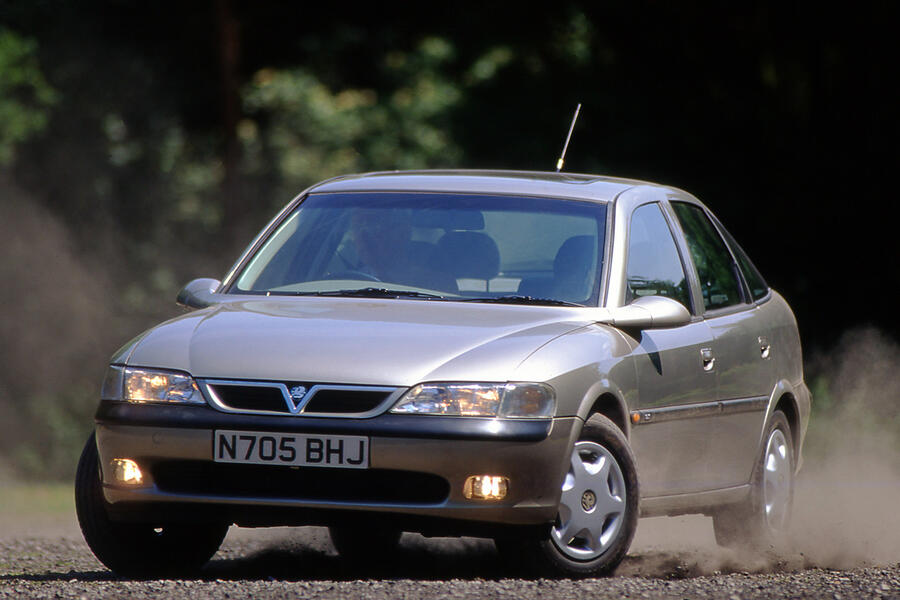
Think of the Vectra today, and no doubt it’s that 1996 road test by Jeremy Clarkson on the old Top Gear telly programme. Serving as a prototype for the hour long version of the show that would air seven years later, the future farmer spends six minutes ripping Vauxhall’s crucial Cavalier replacement to shreds.
Vauxhall’s PR did its best to try and fight back, but for so many the Vectra was forever labeled as dreary and forgettable (distinctive door mirrors aside). And yet as ever with the curly-haired pub landlord, the reality was slightly different. Yes, the Vectra wasn’t the most dynamic choice, but it was spacious, comfortable and packed a range of punchy engines, including some sweet-sounding V6s. There were also saloon, hatch and estate bodystyles, plus enough trim levels to keep the hierarchy-obsessed happy.
Then there was the interior, which delivered close to premium levels of fit and finish – a Mondeo felt decidedly low rent by comparison. It featured some of the best seats in repdom too, which combined with strong refinement and those willing motors made the Vectra a natural in the high velocity game of outside lane one-upmanship. It was also fairly reliable and efficient, which meant fleet managers were happy to hand them out as company perks.
A facelift in 1999 sharpened the chassis, while there was even BTCC-inspired 200bhp SRi model developed by Motorsport Developments. Yet despite this, the Vectra will always be remembered by its Clarkson epithet: ‘The dullest car I ever reviewed’.
Toyota Carina E
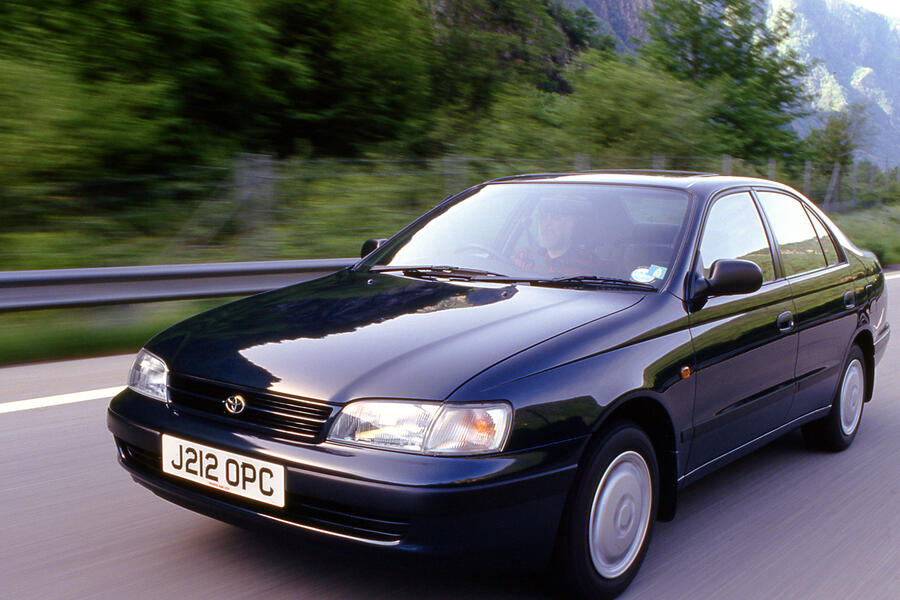
Six years after Nissan opened the doors to its Sunderland factory, Toyota started production at its Burnaston plant in Derbyshire. As with its Japanese rival, the first cars to roll out of the gates were Tokyo designed and developed, but it wasn’t long before a machine better-suited the local markets emerged.
As the E in its name suggests, the Carina E has been created with Europe, and its lucrative fleet sector, in mind. The first of the brand’s models to be marketed under the tagline ‘The car in front is a Toyota’, the British built machine followed the established formula for company car success when it arrived in 1992.
There was choice of three bodystyles (saloon, hatchback and estate), range of four-pot motors (1.6, 1.8 and 2.0-litres) and enough trim levels for the aspirational types (Xi, XLi, SLi, GLi and, just in case onlookers were in any doubt about your status, an Executive). Factor in typical-for-the-time Toyota reliability, and the Carina E was a staple of many user chooser lists.
That said, despite its European tuning the Carina was fairly forgettable to drive. Its engines were pokey enough, but there was too much slop in the chassis and inconsistent ride. Panel-bashing appearances in the BTCC helped boost its profile, but the Toyota failed to stir the soul. There was a (Japanese-built) GTi, but that proved to be all badge and no trousers.
Still, the Carina E did get Toyota a valuable foothold in the fleet sector, paving the way for the long line of Avensis models that lasted until 2018.
Ford Sierra
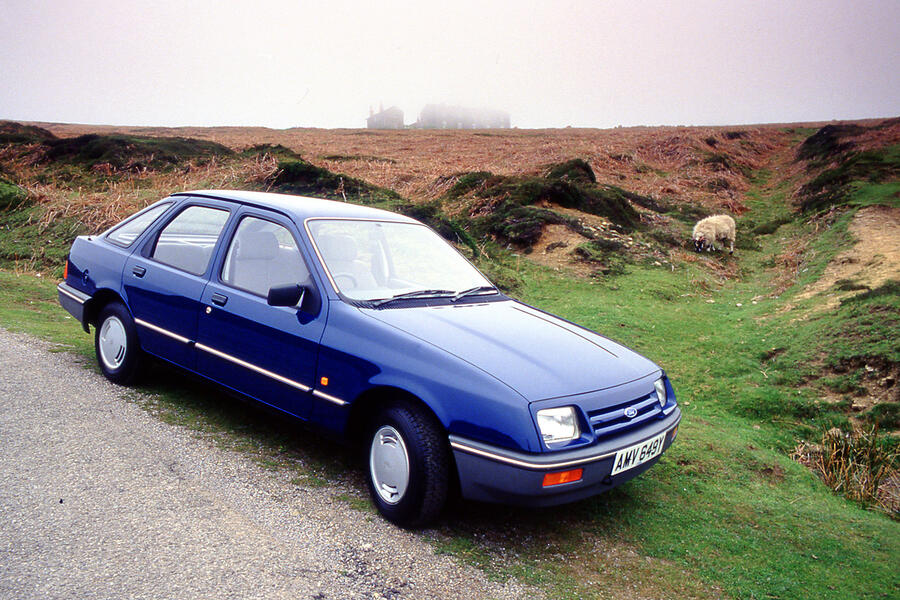
Perhaps few cars have caused quite such a stir in the usually conservative company car class as the Sierra – and not necessarily in a good way. Tasked with replacing the Cortina (a car as traditional, and square-rigged, as a Victorian sideboard), Ford’s designers went for bold.
Foreshadowed by the exotic Ford Probe III concept, the radically aero-styled Sierra was instantly dubbed ‘the jellymould’ when it arrived in 1982. More worryingly for bosses at the Blue Oval, it was shunned by buyers scared off by its futuristic looks. Not only that, it was only available as a hatch and estate – there was no sensible saloon. Many loyal fans of Uncle Henry made a beeline instead for the straight-laced Cavalier.
Eventually the might of Ford’s marketing department (and some generous discounting) turned the tide. When they got past the wind-cheating looks, reps discovered the rear–wheel drive Sierra was mechanically similar to their beloved Cortinas. Yet it also featured a roomier interior that boasted a driver-centric wraparound dash, and far greater motorway refinement (some crosswind stability issues aside).
Even so, a facelift was already underway almost the moment the Sierra broke cover, and in 1987 the refreshed model arrived, complete with the Sapphire four-door saloon. By this time the Sierra has regained its place as the fleet favourite, keeping Ford at the sharp end of the sales top 10 and king of the corporate car park.
Then there were the image-making versions, such as the bi-plane spoiler-toting XR4i and the all-wheel drive XR4X4, which was a true cut price Quattro. Yet for the luckiest senior management there was the Cosworth, a 204bhp, 150mph flagship that offered Ferrari performance with a Ford price tag.
Ford retired in the Sierra in 1993, just as the company car class was starting to move in a more premium direction. As a result, it could just go down in history as the definitive repmobile.

